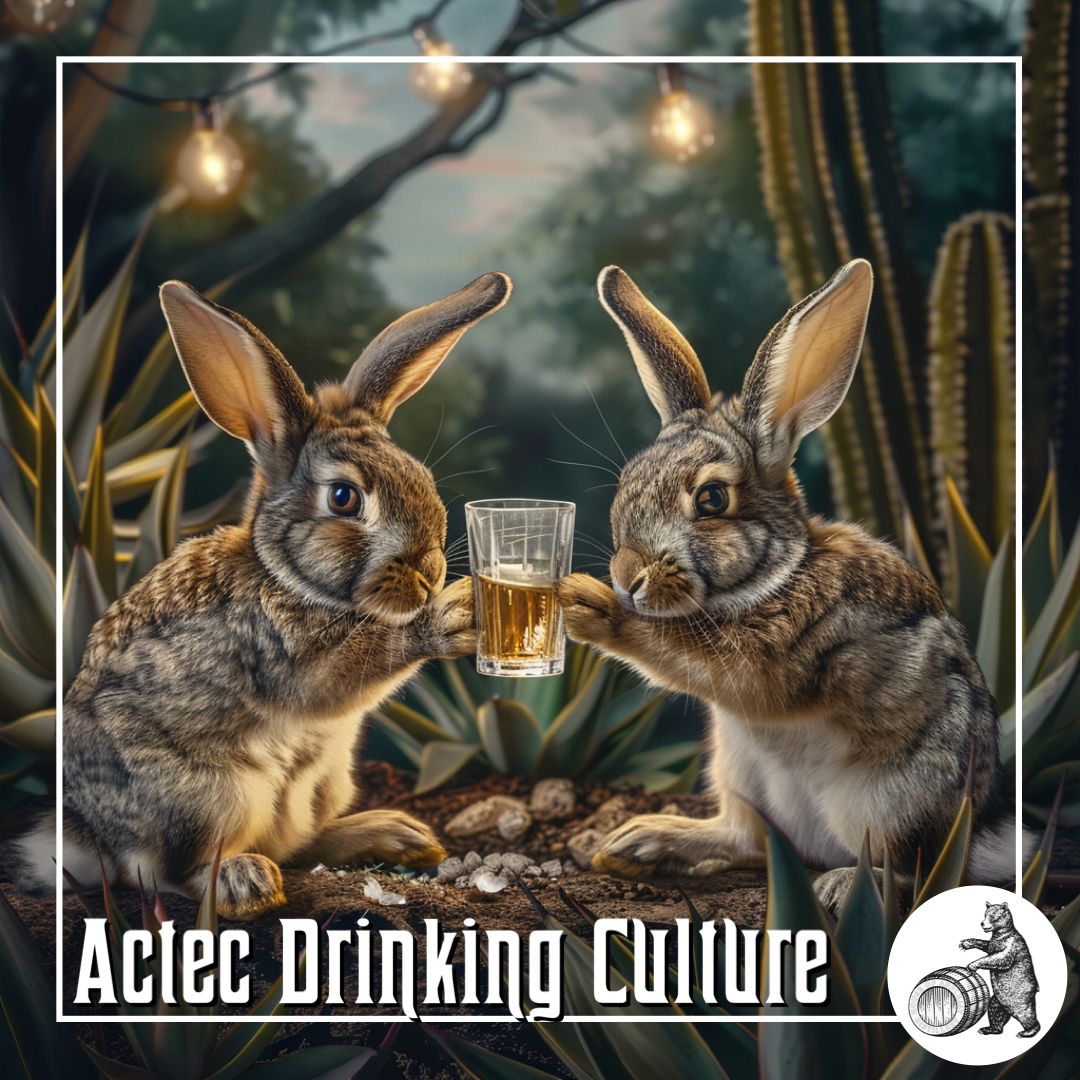The Rabbit Scale of Intoxication
Tepoztēcatl & 400 rabbits
In Aztec mythology, Tepoztecatl, the god of pulque, was closely associated with rabbits. Pulque, a fermented agave drink, was central to Aztec rituals. Tepoztecatl’s link to rabbits was so strong that the Aztecs used “rabbits” to describe intoxication levels, from 25 rabbits for mild intoxication to 400 rabbits for complete drunkenness. This unique scale remains one of the most vivid portrayals of intoxication in history.
The Divine Origins of Pulque
In Aztec mythology, Tepoztecatl (also known as Tezcatzontecatl) was revered as the god of pulque, drunkenness, and fertility. He was born as one of the four hundred sons of Mayahuel, the deity embodying the agave plant used to produce pulque. Tepoztecatl’s lineage, thus, closely tied him to the intoxicating drink. His father, Pantecatl, was credited with discovering the fermentation process that gave rise to pulque, highlighting its divine origins.
Pulque: More Than Just a Drink
Pulque, a fermented beverage made from agave (or maguey) juice, held profound religious and cultural significance in Aztec society. It was not merely a beverage but also a central element in various religious rituals and ceremonies.
Tepoztecatl and Ome Tochtli: The Pulque Deities
In some legends, Tepoztecatl was equated with Ome Tochtli (Two Rabbits), the chief of the four hundred pulque gods. However, regional variations sometimes distinguished between the two deities. As a god associated with pulque, Tepoztecatl was also linked to fertility rites and the moon, showcasing the diverse aspects of his worship.
Tepoztecatl in Tepoztlan
In the town of Tepoztlan, now situated in Morelos, Mexico, Tepoztecatl was revered as a tribal god. The Pyramid of Tepozteco (or El Tepozteco) served as a pilgrimage site, drawing Aztecs from distant regions like Chiapas and Guatemala to worship the pulque god of the four hundred rabbits. However, in the 16th century, the temple statue of Tepoztecatl was destroyed by the Dominican priest Domingo de la Anunciacion, marking a turning point in Aztec beliefs and practices.
Symbols and Depictions
Depictions of Tepoztecatl often portrayed him with his nose pointing upwards and his face divided into halves, one red and one black. The rabbit, symbolizing fertility and abundance, was closely associated with the god of pulque in Aztec mythology. This association led to the use of pulque gods’ names to describe various levels of drunkenness, such as “four hundred rabbits” signifying complete intoxication and “fifteen to twenty rabbits” indicating mild inebriation.
The Aztec Scale of Intoxication
The Aztecs’ use of the “rabbit” scale to describe intoxication levels, ranging from 25 rabbits to 400 rabbits, stands out as a unique and vivid portrayal of drunkenness in any historical or cultural context worldwide.
The Distilling Culture
BLOG
Embark on a global journey, and you’ll find that cultures possess tales that harken back to their ancient beginnings of distillation, brewing, and winemaking.
info@houseofapplejay.com
67 Fowler St, Bldg B, East Ellijay, GA 30540

